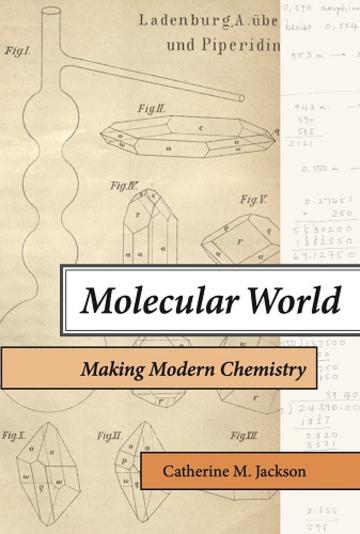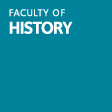“Understanding the Chemocene”: A new venture at the interface between history and chemistry

For more than 200 years, research universities like Oxford have been distinguished by their mission to guide students in their encounter with the frontiers of knowledge, equipping them to become active contributors to society and, in many cases, producers of new knowledge themselves. That mission implies the integration of research and education, so it’s hardly surprising to find an academic revising an existing course or introducing something new to the curriculum. But in 2022, with the backing of the Chair of the History Faculty Board and the Head of the Chemistry Department, I began to develop something very different. “Understanding the Chemocene: Chemistry’s past, present, and future” is a new option in the history of chemistry for undergraduates in the third year of their Oxford Chemistry degree, the MChem.
Developed and delivered by a historian of chemistry who is also a chemist, this series of eight lectures in the history of modern chemistry was approved by the Chemistry Teaching Committee in Trinity 2023 and offered for the first time last Hilary term. This is an unprecedented development in cross-divisional research and education at Oxford, made possible by forward-looking leadership from both Chemistry and History. Fourth-year MChem students have been able to write a Part II thesis in the history of chemistry for more than 50 years—an opportunity I have revived and developed since my arrival in Oxford in 2019. To date, nine chemists have completed theses based on original research in the history of chemistry with my guidance. But “Understanding the Chemocene” is the first taught humanities component of an Oxford science degree that is examinable. In other words, students who selected this new option answered questions about the “Chemocene” in their Part IB Chemistry examination, gaining marks that contribute towards their MChem degrees. As convenor of this option, I was also its lead examiner, reporting marks that were ratified by Chemistry’s IB examiners.
History and chemistry may seem an unlikely place to begin integrating humanities and sciences. But in fact, chemists have long used history to establish their discipline in the university, to validate its theoretical sophistication, and when training students. These days, such stories are often encountered by students in textbooks and popular histories, and they typically prioritize individual success and cognitive insight. Some now address the role of women and non-Europeans in the scientific endeavour. But these histories still tend to repeat exclusionary tropes of genius and dramatic breakthrough that are not typical of most students’ experience as young scientists—especially as they embark on research.
For me, this situation is an opportunity to research and teach other kinds of science history—and that’s where “Understanding the Chemocene” comes in. Built on original research that melds historical analysis of chemistry with ethnographic appreciation of the range of people and resources that make the science possible, these lectures use history to engage chemistry students with broader perspectives on the science they’re learning and what it means to be a chemist. The goal is to move interactions between history and chemistry beyond idealized narratives and outsider critiques that are unhelpful to both parties. Instead, the course seeks to support students by making visible the historical contingencies that produced the modern science of chemistry, using examples from the past that help us understand the changing relationships between chemists and wider society since about 1800, and between chemistry and planet earth over geological time.
I coined the term “Chemocene” to encapsulate those relationships, positioning chemistry in global historical and environmental context, and identifying its potential to shape our world, now and in the future. As the course introduction explains, “In the span of human history, the science of chemistry is extremely recent. Yet, it has played a major role in shaping what is now called the Anthropocene. Like plantations, capital, and industrial waste, chemical knowledge is now global. We are living in the Chemocene.”
The opening lecture introduces students to the “Chemocene” and to the ways scholars across the humanities and sciences have interpreted planetary history. Three subsequent lectures highlight a series of themes derived from my (2023) monograph Molecular World: Making Modern Chemistry. For example, I show why plant-derived drugs, including morphine and quinine, were such powerful drivers of chemistry’s early-nineteenth-century development, and how chemists exploited coal tar in their quest to understand and mimic these complex substances. The remaining lectures examine chemistry’s relationship over the past 200 years with agriculture, pharmacy, war, and the environment, culminating with an overview of chemistry’s place in society today. Overall, “Understanding the Chemocene” positions chemistry at the core of modernity, showing how the science promised to explain life while driving commercial capitalism.
In 2024, lectures for “Understanding the Chemocene” attracted a regular in-person audience of 16-18 students from a cohort of ca. 165, with others watching online via livestream and recording. Informal feedback indicated the lectures were effective, providing a valuable opportunity to reflect and think critically about the science and its context. Several students commented that it was interesting to learn more about the history of chemistry, and refreshing to think about chemistry from a different, broader perspective. Students’ enthusiasm for “Understanding the Chemocene” was reflected in the IB examination, where 17 students answered on this option, scoring on average just under 65%, and including several First-Class marks. In terms of student uptake, 17 responses places “Understanding the Chemocene”—the only third year option that deals with non-traditional content—on a par with established, mainstream options. History of chemistry is now contributing to IB Chemistry examination outcomes.
Last Michaelmas, the Chemistry Teaching Committee underscored its commitment to “Understanding the Chemocene”. As I write, I’m preparing to deliver these lectures for the second time, refining and revising their content in light of my experience last year. I’m also working with colleagues in Chemistry to develop a more sustainable platform for “Understanding the Chemocene” through an expanded research programme at the interface between history and chemistry that we’ve called, “Stronger Together”. History of science is an intrinsically interdisciplinary field spanning the sciences and humanities. Yet, its links to science and scientists have become increasingly fragile in recent decades. “Understanding the Chemocene” and “Stronger Together” are an attempt to revitalise that essential connection from the ground up.
History has much to offer chemists, especially those in training. But understanding science’s inseparability from its historical context goes both ways, prompting a fresh approach to the history of technical knowledge and expertise. Molecular World established that approach, driving my work as historian, chemist, and educator. Chemistry today sits between its complex past and unique potential to shape the future. That’s why my research now seeks to create a model for how history can support would-be scientists and address issues of access and inclusion, while simultaneously reinvigorating history of science that examines the place of science in the modern world, culturally, institutionally, and technically. The interface between history and chemistry is an exciting place to be.
Dr Catherine M. Jackson
Associate Professor of the History of Science



